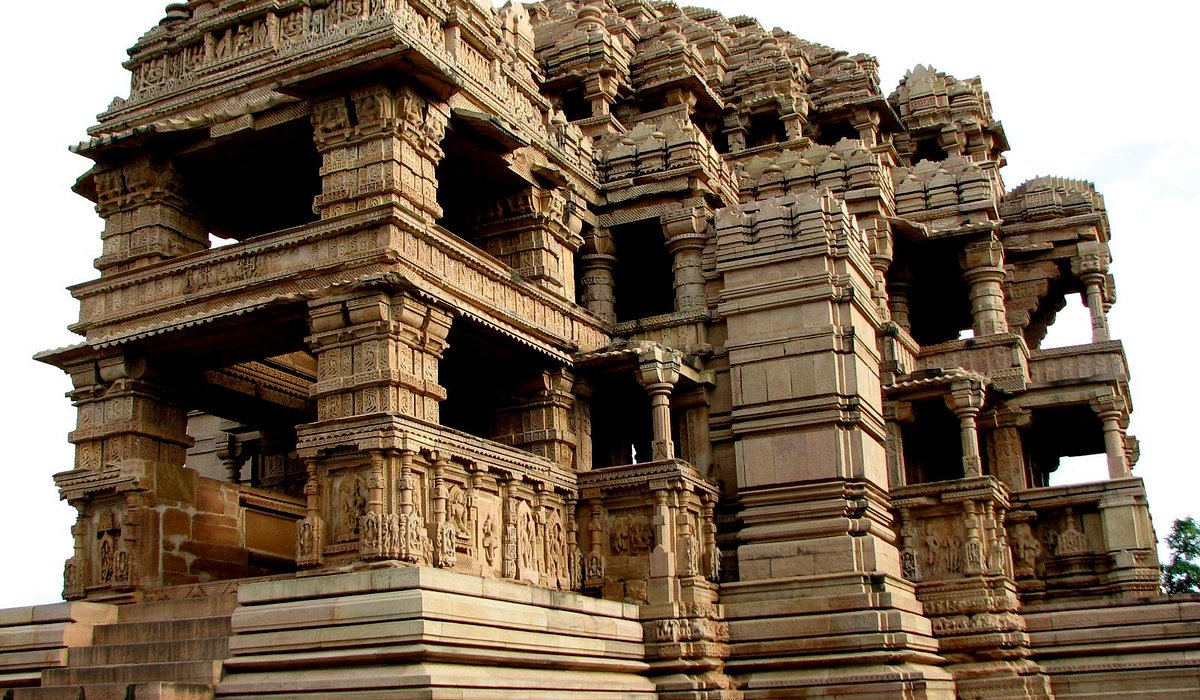gwalior tourist places Gwalior, known as the “Gateway to Madhya Pradesh,” is a city rich in history, culture, and architectural wonders. Famous for its magnificent Gwalior Fort, ancient temples, and grand palaces, the city is a must-visit destination for history buffs, architecture lovers, and spiritual seekers. If you’re planning a trip to Gwalior, here is a detailed guide on the top tourist places to visit in Gwalior and why they deserve a place on your travel itinerary.
1. Gwalior Fort
Why Visit?
Gwalior Fort is one of the largest and most impressive forts in India. Known as the “Gibraltar of India,” this historic fort has witnessed numerous battles and is a symbol of Rajput valor.
Key Attractions:
- Man Singh Palace (famous for its blue-tiled façade)
- Sas Bahu Temples (intricately carved Hindu temples)
- Teli Ka Mandir (a unique Dravidian-style temple)
- Gujari Mahal Museum (showcasing artifacts from the Tomar dynasty)
Best Time to Visit:
- October to March (cool weather, perfect for sightseeing)
2. Jai Vilas Palace
Why Visit?
A blend of European, Italian, and Corinthian architecture, Jai Vilas Palace is a grand palace that now serves as a museum showcasing the royal heritage of Scindia dynasty.
Key Attractions:
- World’s largest chandelier in the Durbar Hall
- Gold-plated furniture and Persian carpets
- Vintage cars and royal possessions
Best Time to Visit:
- Anytime during museum hours
3. Sas Bahu Temples
Why Visit?
Dedicated to Lord Vishnu, these twin temples are famous for their intricate carvings and are a prime example of medieval temple architecture.
Key Attractions:
- Detailed carvings on temple walls
- Panoramic views from the temple complex
- Rich historical significance
Best Time to Visit:
- Early mornings or late afternoons to enjoy the carvings in soft light
4. Tansen’s Tomb
Why Visit?
Dedicated to Mian Tansen, one of India’s greatest musicians and a navratna in Akbar’s court, this place is a tribute to classical Indian music.
Key Attractions:
- Serene garden surroundings
- Annual Tansen Music Festival held in December
- Mughal-era architecture
Best Time to Visit:
- December, during the Tansen Music Festival
5. Sun Temple (Surya Mandir)
Why Visit?
Built by G.D. Birla, this temple is inspired by the Konark Sun Temple in Odisha. It is an architectural marvel and a peaceful spiritual destination.
Key Attractions:
- Beautiful red sandstone structure
- Spiritual ambiance
- Manicured gardens surrounding the temple
Best Time to Visit:
- Morning or evening hours for a peaceful experience
6. Gujari Mahal Archaeological Museum
Why Visit?
Built by Raja Man Singh Tomar for his wife Mrignayani, this museum now showcases ancient sculptures, inscriptions, and artifacts from various periods.
Key Attractions:
- Rare statues of Hindu and Jain deities
- Collection of ancient coins and inscriptions
- Archaeological wonders from Madhya Pradesh
Best Time to Visit:
- Anytime during museum hours
7. Teli Ka Mandir
Why Visit?
One of the tallest temples in Gwalior Fort, Teli Ka Mandir is unique because of its Dravidian-style architecture, a rare sight in North India.
Key Attractions:
- Blend of North and South Indian architecture
- Intricate carvings and grand structure
- Religious significance
Best Time to Visit:
- Winter months (November to February)
8. Gopachal Parvat Jain Sculptures
Why Visit?
Located on Gwalior Fort’s slopes, these rock-cut sculptures of Jain Tirthankaras date back to the 7th–15th centuries.
Key Attractions:
- Monolithic Jain sculptures carved into rock
- Peaceful spiritual ambiance
- Historic and artistic significance
Best Time to Visit:
- Early morning or evening for a serene experience
9. Padavali and Bateshwar Temples (40 km from Gwalior)
Why Visit?
A lesser-known but architectural masterpiece, the Bateshwar Group of Temples consists of 200+ sandstone temples dedicated to Shiva and Vishnu.
Key Attractions:
- Well-preserved Gupta-era temples
- Peaceful environment for meditation
- Ideal for history and photography lovers
Best Time to Visit:
- October to March, when the weather is cool
10. Mitawali, Padavali, and Kakanmath Temples
Why Visit?
These ancient temple sites near Gwalior are filled with mystical architecture and historical legends, making them must-visit destinations for history enthusiasts.
Key Attractions:
- Mitawali Temple: Said to have inspired the design of the Indian Parliament House
- Padavali Temple: Known as the “Mini-Khajuraho” for its erotic carvings
- Kakanmath Temple: A towering Shiva temple with fascinating ruins
Best Time to Visit:
- November to February for pleasant weather
Travel Tips for Visiting Gwalior
- Best Time to Visit: October to March (cool weather, perfect for sightseeing)
- How to Reach:
- By Air: Gwalior Airport (Rajmata Vijaya Raje Scindia Airport) is well-connected.
- By Train: Gwalior Railway Station is a major stop for trains from Delhi, Mumbai, and other cities.
- By Road: Gwalior is well-connected via highways from Delhi (320 km) and Agra (120 km).
- Local Transport: Auto-rickshaws, taxis, and rental cars are available.
- Food to Try: Poha, Kachori, Bedai, Jalebi, and local Mughlai dishes.
- Where to Stay: Luxury hotels (Taj Usha Kiran Palace), mid-range hotels (Clarks Inn Suites), budget stays (OYO rooms).
Conclusion
Gwalior is a city that beautifully blends history, architecture, music, and spirituality. Whether you are exploring the grandeur of Gwalior Fort, experiencing the Tansen Music Festival, or admiring the artistic Jain sculptures, Gwalior offers an unforgettable travel experience.
Plan your trip to Gwalior and uncover its royal charm!
For more travel guides, stay tuned to our website!

